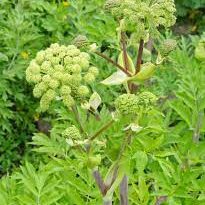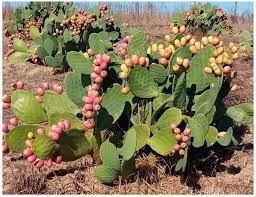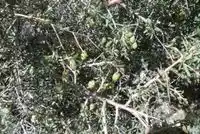11 Medicinal Health Benefits Of Tradescantia zebrina (Wandering Jew)
Tradescantia zebrina, commonly known as Wandering Jew or Inch Plant, is a species of herbaceous perennial plant appreciated for its ornamental qualities and ease of care.
Belonging to the Commelinaceae family, this trailing plant is native to Mexico, but it has become a popular choice for indoor gardens and hanging baskets worldwide.
The most striking feature of Tradescantia zebrina is its vibrant foliage. The leaves are elliptical in shape, about 2 to 5 centimeters wide, and display a distinctive pattern of silver stripes or bands on a deep green background.
The zebra-like stripes give the plant its common name, Wandering Jew, highlighting the wandering growth habit of its vines.
The stems of Tradescantia zebrina are succulent and tend to trail or cascade, making it an excellent choice for hanging baskets or as a ground cover.
The plant produces small, three-petaled flowers that are usually pale pink to purple in color. While the flowers are not the main attraction of this species, they add a delicate touch to the overall appearance.
One of the notable characteristics of Tradescantia zebrina is its adaptability and resilience. It can thrive in a variety of indoor conditions, including moderate to bright indirect light.
This makes it a suitable choice for homes and offices where it can be placed in areas with filtered sunlight. Additionally, it is relatively low-maintenance and can tolerate periods of neglect, making it an ideal option for those new to plant care.
Propagation of Tradescantia zebrina is straightforward, often done through stem cuttings. The cuttings root easily in water or soil, allowing enthusiasts to share and expand their collection.
However, it’s important to note that in some regions, Tradescantia zebrina is considered invasive when grown outdoors, as it can spread rapidly and outcompete native vegetation.
To care for Tradescantia zebrina, it’s recommended to provide well-draining soil and water the plant when the top inch of soil feels dry. Overwatering should be avoided, as it can lead to root rot.
Regular pruning helps maintain a bushy and compact shape, and removing leggy stems encourages new growth. Fertilizing every 4-6 weeks during the growing season with a balanced liquid fertilizer can enhance the plant’s overall health and appearance.
Beyond its aesthetic appeal, Tradescantia zebrina contributes to indoor air quality by helping to filter and purify the air. This additional benefit makes it a popular choice for indoor spaces, where its trailing vines and distinctive foliage can add a touch of nature to the environment.
Tradescantia zebrina is a visually striking and adaptable plant that has found its way into the hearts of indoor gardening enthusiasts. With its unique foliage, easy care requirements, and air-purifying qualities, this wandering jew has become a beloved choice for both novice and experienced plant enthusiasts seeking to enhance their living spaces with a touch of greenery.
The Botanical Description of Tradescantia zebrina
1. Leaves and Stem: Tradescantia zebrina, commonly known as Wandering Jew or Inch Plant, is characterized by its distinct foliage. The leaves are elliptical and succulent, featuring a vibrant green color with silvery stripes or markings that give the plant its “zebrina” name. The stems are trailing and can grow up to several feet in length, creating a cascading effect.
2. Growth Habit: This plant exhibits a prostrate or trailing growth habit, making it well-suited for hanging baskets or as ground cover. The stems are somewhat fleshy and have nodes from which roots can emerge, allowing for easy propagation.
3. Flowers: Tradescantia zebrina produces small, three-petaled flowers that are usually pink, purple, or white. While the flowers are not the primary ornamental feature, they add a delicate touch to the overall appearance of the plant.
4. Root System: The root system of Tradescantia zebrina is relatively shallow but robust. The plant can adapt to various soil conditions, but it thrives in well-drained, fertile soil. The roots play a crucial role in the plant’s ability to spread and form dense colonies.
The Geographic Distribution of Tradescantia zebrina
1. Native Regions: Tradescantia zebrina is native to Mexico, specifically in the Gulf region. Its natural habitat includes tropical and subtropical areas where it can be found growing as ground cover in the understory of forests.
2. Global Cultivation: Due to its ornamental appeal, Tradescantia zebrina has been cultivated and introduced to various regions worldwide. It is a popular houseplant in temperate climates and is often grown outdoors in gardens or landscapes in warmer regions.
3. Climatic Preferences: This species thrives in warm, tropical to subtropical climates. It prefers temperatures between 65°F to 75°F (18°C to 24°C) and high humidity. While it can tolerate some degree of shade, it typically grows best in bright, indirect light.
4. Invasive Potential: In certain non-native regions, Tradescantia zebrina has exhibited invasive tendencies. Its ability to spread rapidly and adapt to different environments can lead to the displacement of native vegetation.
The Chemical Composition of Tradescantia zebrina
1. Flavonoids: Tradescantia zebrina contains flavonoids, which are antioxidant compounds. These substances play a role in the plant’s defense mechanisms and contribute to its overall health.
2. Alkaloids: While present in smaller quantities, alkaloids have been identified in Tradescantia zebrina. Alkaloids often exhibit diverse biological activities and may contribute to the plant’s medicinal properties.
3. Essential Oils: Certain varieties of Tradescantia zebrina may contain essential oils, contributing to the plant’s aromatic profile. The specific composition of these oils can vary among different cultivars.
4. Anthocyanins: The distinctive coloration of the leaves in Tradescantia zebrina is attributed to the presence of anthocyanins. These pigments not only provide ornamental value but may also have antioxidant properties.
Tradescantia zebrina is not only a visually appealing ornamental plant but also possesses a unique botanical and chemical makeup. Understanding its characteristics, distribution, and chemical composition adds to the appreciation of this popular houseplant.
Read Also: How to Farm and Care for Yellowfin Tuna Fish (Thunnus albacares)
The Medicinal Health Benefits Of Tradescantia zebrina (Wandering Jew)

1. Anti-Inflammatory Properties: Tradescantia zebrina exhibits anti-inflammatory effects, potentially aiding in the management of inflammatory conditions such as arthritis and skin irritations.
2. Antioxidant Support: The plant contains antioxidants that help combat oxidative stress, contributing to overall health and potentially reducing the risk of chronic diseases.
3. Respiratory Health: Tradescantia zebrina may have positive effects on respiratory health, offering relief from symptoms associated with conditions like asthma or bronchitis.
4. Stress Reduction: Compounds in Tradescantia zebrina contribute to stress reduction, making it beneficial for individuals dealing with stress and anxiety.
5. Digestive Aid: Traditionally, this plant has been used as a digestive aid, promoting gastrointestinal health and soothing digestive discomfort.
6. Immune System Support: Compounds found in Tradescantia zebrina may support the immune system, enhancing the body’s ability to defend against infections.
7. Wound Healing: The plant’s properties may aid in wound healing, making it valuable for topical applications on cuts and abrasions.
8. Analgesic Effects: Tradescantia zebrina may provide mild pain relief, offering a natural alternative for individuals dealing with mild to moderate pain.
9. Skin Health Enhancement: Tradescantia zebrina is known for promoting skin health, with potential benefits for conditions like eczema and dermatitis.
10. Cardiovascular Support: Research suggests that antioxidants in Tradescantia zebrina may positively impact cardiovascular health, contributing to a healthy heart.
11. Anti-Anxiety Properties: The calming effects of Tradescantia zebrina extend to potential anti-anxiety properties, providing support for individuals dealing with mild anxiety issues.
The Methods of Usage to Achieve the Provided Health Benefits Of Tradescantia zebrina (Wandering Jew)
1. Infusions and Teas: Prepare infusions or teas from the leaves of Tradescantia zebrina for internal consumption, harnessing its potential digestive and respiratory benefits.
2. Topical Applications: For wound healing and skin health, apply poultices or infused oils made from Tradescantia zebrina leaves directly to the affected area.
3. Aromatherapy: Inhaling the aroma of crushed or distilled Wandering Jew leaves may provide stress reduction and anti-anxiety benefits through aromatherapy.
4. Tinctures and Extracts: Create tinctures or extracts for controlled dosage and effective delivery of medicinal compounds found in Tradescantia zebrina.
5. Culinary Use: Incorporate Wandering Jew leaves into culinary creations, such as salads or garnishes, to enjoy its potential antioxidant and nutritional benefits.
The Side Effects Of Using Tradescantia zebrina Medicinal Plant
1. Skin Sensitivity: Topical applications may cause skin sensitivity or allergic reactions in some individuals. Perform a patch test before extensive use.
2. Internal Use Caution: Internal consumption should be approached with caution, and consultation with healthcare professionals is recommended to prevent adverse reactions.
3. Respiratory Irritation: Excessive inhalation of fragrances, even natural ones, may cause respiratory irritation. Ensure proper ventilation when using Wandering Jew for aromatherapy.
4. Interaction with Medications: Potential interactions with medications may occur. Consult healthcare professionals before incorporating Tradescantia zebrina into health regimens.
5. Allergic Reactions: While rare, allergic reactions can occur. Individuals with known allergies to plants in the Commelinaceae family should exercise caution and seek professional advice.
Tradescantia zebrina, or Wandering Jew, offers a range of potential medicinal health benefits, but it is essential to use it judiciously and be aware of potential side effects. Always consult with healthcare professionals before incorporating it into medicinal practices.
Read Also: Pest Control Methods for Crops
The Scientific Research and Studies of Tradescantia zebrina

1. Antioxidant Properties: Numerous scientific studies have delved into the antioxidant properties of Tradescantia zebrina. The plant has been found to contain compounds with free-radical scavenging capabilities, contributing to its potential health benefits.
2. Phytochemical Composition: In-depth analyses have identified various phytochemicals present in Tradescantia zebrina. These include flavonoids, alkaloids, and essential oils, each with unique properties that have been subject to scientific investigation.
3. Anti-Inflammatory Effects: Scientific research suggests that Tradescantia zebrina exhibits anti-inflammatory effects, indicating its potential in managing inflammatory conditions. These studies explore the mechanisms by which the plant modulates inflammatory pathways.
4. Wound Healing Properties: Studies have investigated the wound healing properties of Tradescantia zebrina, particularly in topical applications. The research explores the plant’s ability to promote tissue regeneration and accelerate the healing process.
5. Antimicrobial Activity: Tradescantia zebrina has been a subject of research regarding its antimicrobial activity. Scientific studies aim to understand the effectiveness of the plant against various microorganisms, contributing to the field of natural antimicrobials.
The Safety Precautions and Recommendations In Using Tradescantia zebrina Medicinal Plant
1. Allergic Reactions: Individuals with known allergies to plants in the Commelinaceae family, which includes Tradescantia zebrina, should exercise caution. Allergic reactions may include skin irritation or respiratory symptoms.
2. Internal Use Caution: Internal consumption of Tradescantia zebrina should be approached with caution. Consultation with healthcare professionals is recommended to determine appropriate dosage and prevent potential adverse effects.
3. Skin Sensitivity: Topical applications may cause skin sensitivity in some individuals. Perform a patch test before extensive use, especially in the case of preparations for wound healing or skin health.
4. Interaction with Medications: Caution is advised regarding potential interactions with medications. Consult healthcare professionals before incorporating Tradescantia zebrina into health regimens, especially for individuals on prescribed medications.
5. Controlled Dosage: Adhering to controlled dosage recommendations is crucial to prevent adverse effects. Seek guidance from herbal practitioners or healthcare professionals for personalized advice.
FAQs About Tradescantia zebrina Medicinal Plant
1. Q: Can Tradescantia zebrina be used for internal consumption?
While traditionally used for certain internal purposes, internal consumption should be approached with caution, and consultation with healthcare professionals is recommended.
2. Q: Is Tradescantia zebrina safe for topical applications?
Topical applications are generally safe, but individuals with skin sensitivities should perform a patch test. Consultation with healthcare professionals is advisable for specific skin conditions.
3. Q: Are there any contraindications for using Tradescantia zebrina medicinally?
Individuals with known allergies to the plant family and pregnant or breastfeeding individuals should exercise caution and consult healthcare professionals.
4. Q: Can Tradescantia zebrina be cultivated at home for medicinal use?
While it can be grown at home for ornamental purposes, cultivating Tradescantia zebrina for medicinal use requires proper knowledge and caution due to potential variations in chemical composition.
5. Q: What should I do if I experience adverse effects from using Tradescantia zebrina medicinally?
Discontinue use immediately and seek medical attention. Inform healthcare providers about the medicinal application to facilitate appropriate treatment and guidance.
Read Also: What is the Human Impacts on Nutrient Cycles?









